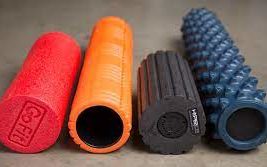Why FOAM ROLL?
Is your knee hurting when you go up or downstairs? Are your legs sore after or even at the beginning of the walk? There are many reasons why but the commonly overlooked ones are tight muscles around that knee and your leg in general.
Foam rolling is a self-myofascial release (SMR) technique, in other words – self-massage. It can help relieve muscle tightness and increase your joint range of motion. It’s important not to be too aggressive when rolling. As with any other form of exercise, your body needs a chance to warm up. And while foam rolling can be sometimes painful, remember not to go past 5 on the 10 point pain scale.
Foam rolling is a 3-step process: warm-up, cross friction, and active release.

“Foam rolling helps release tension in the muscles, relieve muscle soreness, and improve flexibility and range of motion.”
Warm-up
Start with long strokes up and down the full length of the muscle, adjusting positions to reach not only gastrocnemius and soleus muscles but also the peroneal muscles and tibialis posterior. In other words, you want to roll all 3 sides of your calves – under your leg and both sides. Remember, do not roll shins.
These light and relatively gentle strokes are similar to the traditional massage and are used used to promote blood flow to the muscles and warm up then up before moving to more aggressive techniques.
Cross Friction
This f technique is similar to a sports massage. We are going to focus on a specific point, to release a “knot,” or to break up an area of scar tissue.
We are working on the area by starting on a painful point, pointing there, and holding steady pressure for 15 to 30 sec with deep breathing. After that time, move about half an inch to either direction and hold there, return to the original point, hold and move half an inch in the other direction. Continue slowly widening the area and pausing every time. Think about rolling the delicate dough – you want to loosen and flatten it, but not break or tear. By patient. The pressure should be intense but not painful (above 5 on 10 -point scale) or sharp.
Active Release
Just like in cross friction, we use this technique to focus on a specific area, however, rolling might be a misnomer here. We apply pressure to a muscle and work adjacent joint in its full range of motion. Roller never actually moves. Again, remember not to apply too much pressure. You do not want to inflict pain.
Finally, remember that a fitness professional or medical exercise specialist can teach you proper foam rolling techniques. Just watching a video wouldn’t do in most cases.